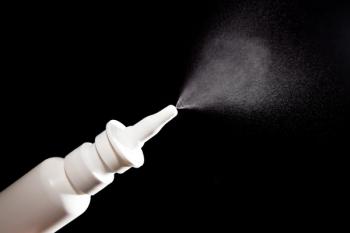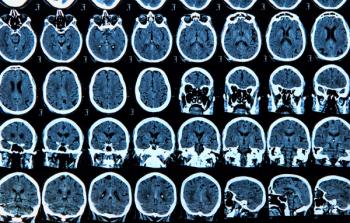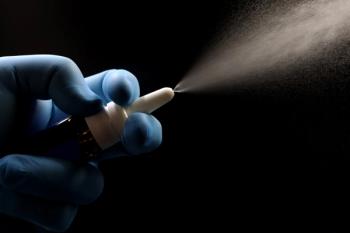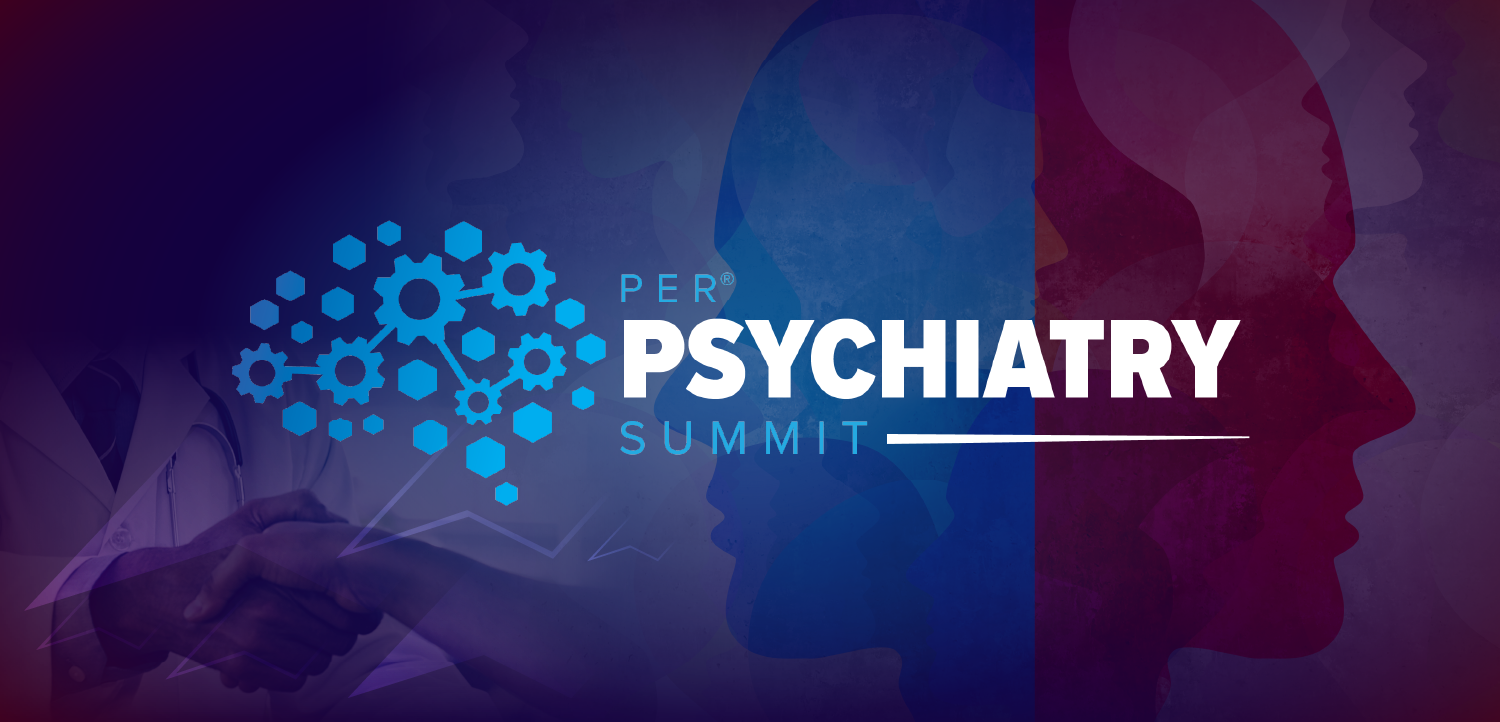
Addressing Cognition in Late-Life Depression
Key Takeaways
- LLD prevalence is 2-4%, rising to over 14% in nursing homes, with cognitive decline affecting executive function and memory.
- Diagnosis involves differentiating LLD from dementia, considering cognitive symptoms and medication effects.
Late-life depression poses unique challenges, impacting cognitive function and requiring tailored treatment strategies for older adults.
Late-life depression (LLD) is defined as unipolar major depressive disorder in individuals aged 60 years or older.1,2 The prevalence of LLD is 2% to 4% and exceeds 14% in nursing homes.1,3 As the proportion of older US adults is projected to rise,4 the burden of this underreported3 and significant cause of morbidity5 will grow substantially. Adults with an early-onset LLD have experienced at least 1 depressive episode before reaching late life, while those with late-onset LLD experience their first episode in late life.
Cognitive function is uniquely important in LLD, with at least 50% of patients experiencing decline.6 LLD is a risk factor for dementia, a prodrome of a neurodegenerative disease, or a comorbid condition with a fully developed neurocognitive disorder. The cognitive profile of adults with LLD ranges from normal cognition to subjective cognitive decline, mild cognitive impairment, and dementia. During the early stages of impairment, the affected cognitive domains of LLD include executive function, information and language processing speed, memory (especially episodic memory), and visuospatial abilities.6 The condition of depression-executive dysfunction syndrome describes depressed individuals marked by executive function decline.8 It is often observed in the context of cerebrovascular disease affecting frontal-subcortical structures.9
Assessment
In addition to ruling out adjustment disorder, bereavement, bipolar disorder, mood disorder related to a general medical condition, and substance-induced
Older adults may not readily acknowledge mood or cognitive symptoms, therefore involving support systems in the evaluation may provide additional diagnostic utility.10,11 Symptom patterns consistent with previous episodes may favor diagnosing LLD over dementia, particularly if earlier episodes were accompanied by cognitive dysfunction. Use of a clinically validated screening tool for dementia such as the Montreal Cognitive Assessment, Mini-Mental State Examination, or mini-Addenbrooke’s Cognitive Examination can establish a baseline and assist with tracking cognitive symptoms over time.12-14
A thorough review of substances and medications is essential, particularly considering the potential cognitive effects of benzodiazepines, opioids, corticosteroids, and anticholinergic medications. Over-the-counter drugs and supplements should also be evaluated. It is also essential to screen for vascular risk factors such as hypertension, diabetes, obesity, and hyperlipidemia. Addressing these factors may delay or prevent neurocognitive symptoms.15,16
Laboratory testing including a comprehensive metabolic panel, complete blood count, thyroid stimulating hormone, phosphatidylethanol, and vitamin B12 should be considered part of routine workup for LLD. Other reversible causes of dementia may be considered by screening for human immunodeficiency virus and syphilis. Neuroimaging is indicated when there are focal neurologic deficits, androutine electroencephalogram may be warranted if considering additional neurologic conditions or in cases of rapidly progressive cognitive decline. Cerebrospinal fluid studies or fluorodeoxyglucose positron emission tomography may be considered on a case-by-case basis.
While a detailed neuropsychological assessment is not part of a routine clinical evaluation of LLD, certain findings on such an assessment will help in the clinical determination whether the deficits are driven by LLD versus comorbid neurodegenerative disease.17 A patient with LLD is likely to demonstrate more pronounced deficits on attention, executive function, and processing speed than other domains, and more learning than recognition deficits in the memory domain.18
Pharmacological Treatment Strategies
The treatment of LLD can be challenging due to reduced antidepressant efficacy and higher relapse rate.19 Associated cognitive dysfunction, particularly executive, may persist even after successfully treating mood symptoms.20 Further, baseline cognitive impairment is a predictor of poor response to treatment.21
First line medication approaches to LLD include antidepressants such as selective serotonin reuptake inhibitors, serotonin-norepinephrine reuptake inhibitors, mirtazapine, and bupropion.7,22 Tricyclic antidepressants are often considered after safer alternatives have failed, as associated anticholinergic effects may acutely worsen cognition and have been associated with increased risk for dementia.23 Monoamine oxidase inhibitors may carry vascular risks in older populations and are underutilized.24,25 Augmentation with low-dose lithium (target 0.3-0.6 mEQ) may have adverse cardiac effects, increase fall risk, and affect kidney and thyroid function.22 Second-generation antipsychotics should be used judiciously in this population due to cardiac and autonomic effects, and the black box warning for all-cause mortality risks in individuals with comorbid dementia.22 Still, there is strong evidence for the use of aripiprazole as a safe augmenting agent.22,26Other pharmacologic treatment strategies include the use of stimulants such as methylphenidate, which are frequently recommended to address apathy and processing speed.7,19 Dopamine agonists such as pramipexole have been recommended for depression with executive dysfunction, particularly in individuals with parkinsonism.19,27
When considering the cognitive effects of LLD treatments, the literature does not support a procognitive impact. Sertraline has shown the most consistent positive benefits, while citalopram may be associated with adverse outcomes. In a recent systematic review of antidepressant effects on cognition in LLD, authors found that sertraline and vortioxetine had at least moderate effect on processing speed, while sertraline, duloxetine, and vortioxetine demonstrated at least small effect on memory.28 In contrast, citalopram and escitalopram had minimal cognitive impact, with one study linking citalopram to worsening cognition in treatment-resistant depression.28
Another recent systematic review and meta-analysis found that memory and learning, and possibly processing speed, are most likely to improve with antidepressant treatment, while executive function is least likely to improve.21 Additionally, there was inconsistent evidence for immediate memory and global cognition.21
Still, this literature is limited by high heterogeneity of methodologies and inability to separate improvement in cognition from a general improvement in mood symptoms, and, for example, being due to better participation in cognitive assessments. In addition, given that most of these studies were not placebo-controlled or did not have an untreated group, it is not possible to eliminate the possibility of practice effects underlying the apparent cognitive improvement.
Finally, cholinesterase inhibitors have not demonstrated efficacy for adjunctive use in LLD associated with cognitive impairment, and there is one study which found donepezil increased the risk of depressive relapse during maintenance phase.29,30
Behavioral Treatment Strategies
Nonpharmacologic approaches are increasingly important and should be considered even for subsyndromal depressive symptoms. These treatment options may include appropriate physical activity, restful sleep, appropriate nutrition and microbiome health, and healthy lifestyle such as smoking and alcohol cessation.31
Psychotherapies have demonstrated efficacy in LLD which are comparable with pharmacotherapy.31,32 Specific treatments include cognitive behavioral therapy, problem solving therapy, interpersonal psychotherapy, and ENGAGE (a neurobiologically targeted form of behavioral activation therapy).7 Effects on cognition are, however, less well understood. Two trials with problem solving therapy demonstrated modest improvement in processing speed but no effect on memory.28 Problem solving therapy may also be particularly useful for individuals with the executive dysfunction syndrome which is considered more resistant to pharmacotherapy.19,33
Neuromodulation and Interventional Treatments
Neuromodulation and other procedural treatments are emerging as alternatives for LLD and hold promise to target LLD associated cognitive impairment.
Transcranial Magnetic Stimulation (TMS)
TMS is a safe and well-tolerated treatment for
Intermittent theta burst stimulation (iTBS), which significantly reduces treatment time per session is FDA approved for adults and has demonstrated noninferiority to standard rTMS in at least 1 trial involving geriatric patients; however, iTBS is still considered investigational for LLD.34,37
There are technical challenges using TMS in LLD, as cerebral atrophy may reduce targeting precision and engagement. Treatment coils which engage the cortex more broadly and deeply may help to compensate.38
Research on the cognitive effects of rTMS in LLD remains limited, with studies demonstrating only inconsistently moderate benefits to specific cognitive tasks while others find no benefit.39 While cognitive effects of TMS in younger adults have been better studied, improvement across various cognitive domains have been inconsistent and are not robust. Most of these studies have focused on group-level analysis, thus more work is needed to characterize whether TMS could provide cognitive benefit for select individuals or populations. One study of
Transcranial Electrical Stimulation (tES)
tES is a broad term for noninvasive brain stimulation techniques including transcranial direct current stimulation (tDCS) and transcranial alternating current stimulation (tACS). tDCS applies a low direct current (usually 1-2mA) stimulus across the brain, often targeting the DLPFC when treating depression. While there is limited overall evidence supporting the use of tDCS for treating LLD, it is considered a safe and relatively inexpensive form of neurostimulation which may potentially be used in the home setting, best suited to individuals with less treatment resistance.40,41
While the efficacy of tDCS in treating depression may be lower than other forms of neurostimulation, effects on cognition are promising.40 tDCS has been shown to improve cognition in older adults,42-44 and anodal administration at the DLPFC has been shown to improve working memory and word retrieval in older adults.43,45 One meta-analysis found tDCS had small but significant effect sizes on working memory (0.17) and attention (0.20) when compared with sham.46 Recently, a large, 7-year, sham-controlled study combining prefrontal tDCS with cognitive remediation helped to slow cognitive decline in older adults with remitted LLD.47 This suggests that different approaches to tDCS may be considered to provide maximal response for both LLD and cognition.
tACS uses low intensity alternating rather than direct current to stimulate the brain. It has mostly been studied in healthy populations as a cognitive enhancer, yet it has also been studied in depression and other psychiatric conditions.48 A recent meta-analysis of the cognitive effects of tACS found modest to moderate improvements across cognitive domains which were more pronounced after completing treatments. In this analysis, older adults and those with psychiatric conditions also benefited.49
Ketamine and Related Therapies
While both IV ketamine and intranasal esketamine have been established as being safe and effective for treatment-resistant depression, evidence for use in treatment-resistant LLD is still emerging.50 Given transient treatment-emergent hypertension, there are theoretical vascular safety risks when using ketamine or esketamine for LLD, but these risks have not been conclusively demonstrated51 and dose reduction may result in decreased efficacy.52 One post-hoc analysis of a large, open-label esketamine trial (SUSTAIN-2) found no difference in safety or efficacy between younger and older adults, and there were no adverse cognitive effects at any age.51 A randomized, double-blind, active-controlled study of esketamine for TRLLD (Transform-3) did not demonstrate significant differences with esketamine plus antidepressant vs antidepressant plus placebo; however, subgroup analyses found that “younger” older adults (65-74) responded, particularly if depression began before the age of 55 (early onset LLD). This study found slight improvement in all higher-level cognitive domains, including executive function.53 Beyond efficacy for LLD, IV ketamine has been found to reduce suicidality in older adults with treatment-resistant depression.54
Electroconvulsive Therapy (ECT)
Though ECT predates psychiatric pharmacotherapy, it remains an underutilized treatment option for LLD.55,56 While ECT carries well-known cognitive risks, ECT is considered relatively safe in older adults and remains the most effective brain stimulation method for treating the mood symptoms of LLD.57,58 Additionally, ECT may be particularly effective for treatment-resistant LLD or more severe illness including depression with psychotic or catatonic features.59,60 Compared with other forms of neurostimulation, ECT produces a rapid and definitive effect, thus may be indicated more urgently for depression with suicidal ideation or failure to thrive.
The cognitive adverse effects of ECT are more pronounced with bitemporal (BT) than right unilateral (RUL) lead placement, wider pulse width, high vs low-dose, and thrice vs twice weekly treatment interval.61 The cognitive effects of ECT do not differ by age, and ECT does not appear to increase the risk of developing dementia.61,62 Individuals with LLD, dementia, or white matter hyperintensities may be more sensitive to the temporary cognitive effects of ECT, but there is still no conclusive evidence that ECT causes persistent cognitive deficits in such patients.63-65 More research is needed on ECT’s effects on specific cognitive domains. While BT ECT carries greater cognitive risks, its efficacy is considered higher than RUL ECT, thus remains frequently utilized with increased severity of illness or if RUL ECT is ineffective.66
Concluding Thoughts
The burden of LLD continues to grow with unique diagnostic and treatment challenges. Clinicians should weigh risks and benefits of available pharmacologic, behavioral psychotherapeutic, and interventional treatments. The rise of noninvasive interventional techniques such as tDCS, ketamine, and rTMS show promise in improving procognitive antidepressant outcomes in LLD.
Dr Hubregsen is an assistant professor in the Department of Psychiatry and serves as an associate program director for the residency program at UT Southwestern Medical Center. He also serves as medical director of ECT Services at William P. Clements Jr. University Hospital. Dr Brunoni is a professor of psychiatry and the chief of the division of interventional psychiatry at UT Southwestern Medical Center. Dr Camp is an associate professor in the Department of Psychiatry at UT Southwestern Medical Center, and the director of the Neurocognitive and Geriatric Psychiatry Program in the UT Southwestern Psychiatry Outpatient Clinic. She is also the associate program director of the combined psychiatry and neurology residency program. Dr Rajji is a professor and chair of the Department of Psychiatry at UT Southwestern Medical Center.
References
1. Blazer DG.
2. Gundersen E, Bensadon B.
3. Teresi J, Abrams R, Holmes D, et al.
4. Administration for Community Living.
5. Soysal P, Veronese N, Thompson T, et al.
6. Köhler S, Thomas AJ, Barnett NA, O’Brien JT.
7. Ellison JM, Kyomen HH, Harper DG.
8. Vataja R, Pohjasvaara T, Mäntylä R, et al.
9. Alexopoulos GS.
10. Alexopoulos GS, Borson S, Cuthbert BN, et al.
11. Burke WJ, Roccaforte WH, Wengel SP, et al.
12. Nasreddine ZS, Phillips NA, Bédirian V, et al.
13. Folstein MF, Folstein SE, McHugh PR.
14. Hsieh S, McGrory S, Leslie F, et al.
15. Lisko I, Kulmala J, Annetorp M, et al.
16. Yang L, Deng YT, Leng Y, et al.
17. Gasser AI, Salamin V, Zumbach S.
18. Vu NQ, Aizenstein HJ.
19. Alexopoulos GS.
20. Masse-Sibille C, Djamila B, Julie G, et al.
21. Ainsworth NJ, Marawi T, Maslej MM, et al.
22. Subramanian S, Oughli HA, Gebara MA, et al.
23. Gray SL, Anderson ML, Dublin S, et al.
24. Volz HP, Gleiter CH.
25. Shulman KI, Fischer HD, Herrmann N, et al.
26. Lenze EJ, Mulsant BH, Roose SP, et al.
27. Barone P, Poewe W, Albrecht S, et al.
28. Nelson JC, Gandelman JA, Mackin RS.
29. Devanand DP, Pelton GH, D'Antonio K, et al.
30. Reynolds CF 3rd, Butters MA, Lopez O, et al.
31. Husain-Krautter S, Ellison JM.
32. Pinquart M, Duberstein PR, Lyness JM.
33. Areán PA, Raue P, Mackin RS, et al.
34. Trapp NT, Purgianto A, Taylor JJ, et al.
35. Zhang M, Mo J, Zhang H, et al.
36. Göke K, Trevizol AP, Ma C, et al.
37. Blumberger DM, Mulsant BH, Thorpe KE, et al.
38. Kaster TS, Daskalakis ZJ, Noda Y, et al.
39. Göke K, McClintock SM, Mah L, et al.
40. Fregni F, El-Hagrassy MM, Pacheco-Barrios K, et al.
41. Woodham R, Rimmer RM, Mutz J, Fu CHY.
42. Antonenko D, Hayek D, Netzband J, et al.
43. Fertonani A, Brambilla M, Cotelli M, Miniussi C.
44. Meinzer M, Lindenberg R, Phan MT, et al.
45. Jones KT, Stephens JA, Alam M, et al.
46. Begemann MJ, Brand BA, Ćurčić-Blake B, et al.
47. Rajji TK, Bowie CR, Herrmann N, et al.
48. Alexander ML, Alagapan S, Lugo CE, et al.
49. Grover S, Fayzullina R, Bullard BM, Levina V, Reinhart RMG.
50. Lipsitz O, Di Vincenzo JD, Rodrigues NB, et al.
51. Ochs-Ross R, Wajs E, Daly EJ, et al.
52. Lijffijt M, Murphy N, Iqbal S, et al.
53. Ochs-Ross R, Daly EJ, Zhang Y, et al.
54. Vanderschelden B, Gebara MA, Oughli HA, et al.
55. Geduldig ET, Kellner CH.
56. Jones KC, Salemi JL, Dongarwar D, et al.
57. Kerner N, Prudic J.
58. Kumar S, Mulsant BH, Liu AY, et al.
59. Wagenmakers MJ, Oudega ML, Bouckaert F, et al.
60. Luchini F, Medda P, Mariani MG, et al.
61. Semkovska M, McLoughlin DM.
62. Osler M, Rozing MP, Christensen GT, et al.
63. Rao V, Lyketsos CG.
64. Nelson JP, Rosenberg DR.
65. Oudega ML, van Exel E, Wattjes MP, et al.
66. Kellner CH, Knapp R, Husain MM, et al.
Newsletter
Receive trusted psychiatric news, expert analysis, and clinical insights — subscribe today to support your practice and your patients.















